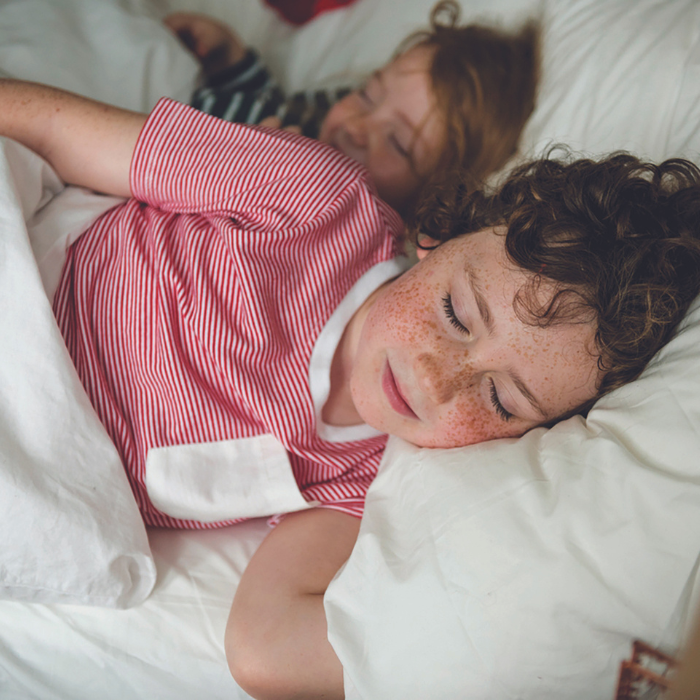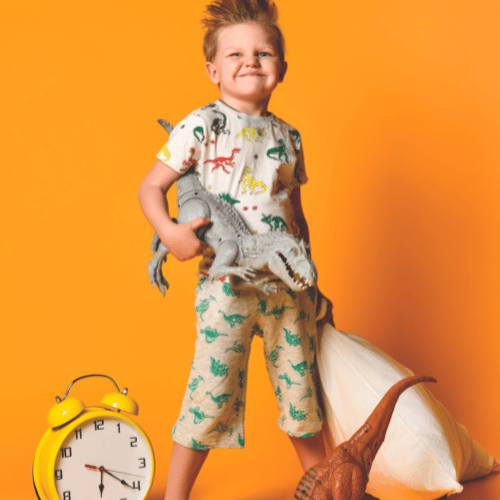
Desperate for your new baby to sleep longer or settle on his own? Don’t turn to sleep training or cry it out methods … here’s why
May I begin by telling you that this sleep article is being written by a tired parent, not by a rested academic whose kids are long grown. Be assured I was up – often – just last night. I did not want to get up, but then I’m sure my daughter does not wish to be ravaged by teething pain. So yes, I am tired. I’m sure she is too.
Further disclosure: this author survived the 1970s, sometimes being left to cry herself to sleep. And there were times I left my older daughter crying in her cot (sorry, love). She surived too. I tell you all this because the last thing I wish to do here is beat anyone up. Bash you with the guilt stick. Because we are all doing our best. We all make mistakes. We are all learning. That said, I need to tell you why I have vehemently turned my back on ‘Cry It Out’ as a method for ‘training’ babies to sleep. In the gap between my two children, brain imaging techniques improved, research was published, and I learned a whole lot more.
The biological realities about babies’ sleep cannot be ignored. Babies wake up during the night. This frequent night waking allows for tiny tummies to be regularly refueled, and it creates the opportunity for emotional reconnection – the filling of tanks of a different type. We know that babies have shorter sleep cycles than adults, and that they don’t establish a circadian rhythm (which is being mostly awake in the daytime and mostly asleep at night) until at least 3 months of age. In fact, sleep researchers reassure us that the human sleep mechanism is not completely formed until around 5 years of age and that night waking is perfectly normal for infants and young children.
Therefore, sometimes when parents describe sleep problems with their children, they are actually describing quite normal sleep behaviours. Typical childhood stuff. Also, bear in mind that the messages from our culture (“Independence is great!”), from our older family members (“We left you to cry and you’re alright …”) and even from health professionals (yes, nurse at my GP’s office, I’m talking to you!) can fly in the face of current research. Staying on top of information about brain development, attachment theory and their relationship to sleep can give us reason to respond to our children, instead of letting them Cry It Out.
Babies are not born with the ability to regulate their physiological states. They can’t feed themselves when hungry, or warm themselves when chilly. They need their significant adults to do those things for them. The same is true for regulating emotional states. Babies are unable to cheer themselves when sad, or calm themselves when frightened. They need their people to do this too – cuddling, rocking, singing, shushing. This is as true at 3am as it is at 3pm. And due to the interconnected nature of human development, these emotional states also impact our physiological realities: heart rate, digestion, breathing patterns.
Consider, then, how confusing it must be to be cared for responsively at certain times of the day and left alone to cry at other times. This type of inconsistent care isn’t just unpleasant for baby in the moment, it threatens to ‘train’ caregivers to desensitise themselves to the baby’s cries. This has the potential to put a baby at immediate risk and, over time, it can undermine the entire caregiving relationship.
Crying is often the only way that babies have to communicate “I am stressed!”. Because babies’ brains are developing so rapidly, they are particularly vulnerable to the impacts of stress. These can include the production of cortisol, and – if left without comfort for long enough – pain numbing chemicals and hormones, which our bodies produce in an attempt to physiologically and emotionally retreat. This is known as dissociation and is a toxic state to be avoided.
Instead, Dr. Margot Sunderland (writer and psychologist and Director of Education and Training at the Centre for Child Mental Health in London) encourages us to look at a crying baby or toddler and to imagine that they are saying, “I need to be soothed!”.
The younger the baby, the more this is true. I was moved by the simple beauty of writer Louise Erdrich’s description in The Blue Jay’s Dance, where she writes, “A baby must be weaned from its other body – mine.” This takes time. Keep breathing. It just takes time.
So what’s a tired mama to do?
- At first, embrace a 24-hour sleep cycle. Nap when baby naps. Try not to let yourself get to the breaking point of crazy exhaustion.
- Go for a consistent, calm evening routine. This might involve soft music, dim lights, a warm bath.
- Conserving your energy might mean letting go of high housework standards, asking for help with older children, or saying no to invitations.
- Infant massage has been proven to help babies settle and promote sleep. Give it a go.
- Close sleeping arrangements (e.g. baby in bassinet within arm’s reach of parent’s bed) are associated with a significant reduction in rates of SIDS, and the closer the sleeping arrangement the greater the parents’ reported satisfaction with sleep.
- Know the difference between your baby’s noises. The grizzling of “I’m tired and almost asleep” sounds quite different to the full-on crying of “I’m freaked out and lonely!”. Letting the first one go isn’t a big deal, ignoring the second type can be problematic.
- Accept that leaving baby to cry (a little bit, sometimes) is always preferable to pushing yourself beyond your limit of coping. Better that baby cries a bit as you walk around the house outside breathing deeply, than you losing your cool in spectacular fashion.
- Know that this phase of sleeplessness will end. Eventually, this kid will sleep. Promise.
- Go the the mirror. Look yourself in the eye. Tell yourself: “I am doing a fine job. My baby will develop beautifully and I will get through this sleeplessness.”
- Seek support when you need it. Call a friend, call Plunket, talk to your partner, to your GP.
[byline]
Miriam McCaleb has been a kindergarten teacher and a university lecturer. These days, she parents full time, blogs upon occasion and does a bit of writing in between. As the mother of a toddler, she considers sleep to be amongst the world’s most precious commodities, like fresh water and sustainable energy. Visit her at www.baby.geek.nz
[/byline]








